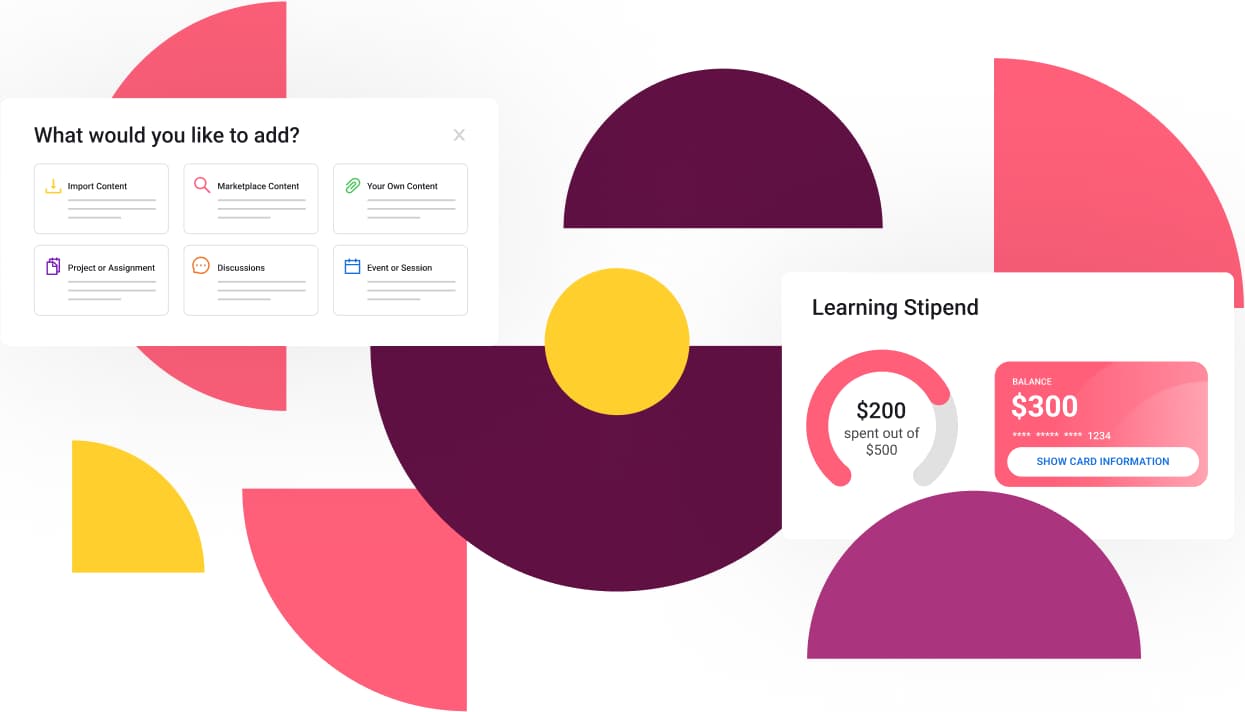Skills that Matter Now
When we talk about acquiring skills, it can sometimes sound like skills are commodities that you provide to employees, like laptops. Skills inherently cannot be separated from the people and teams that need them, and the most successful companies are those that take a proactive (rather than reactive) approach to skill-building. And we’re not talking about the distant future here. Employers are looking at how to develop new skills now. From all the conversations we at Learn In have had with leaders, it is now more apparent than ever that we will need a systematic approach to the challenge of ever-evolving skill needs.
The World Economic Forum (WEF) estimates that machines will replace 85 million jobs by 2025. Sounds like doom and gloom. Robots will rule the world, and unemployment will soar. But that is not quite the case because that same automation will create 97 million new jobs to manage this new environment. Every technological transition requires reskilling the next generation, but today’s shifts are happening multiple times within a single generation. So the question is: how do we equip people with skills for 97 million jobs that do not yet exist?
Where Automation Will Strike First
According to McKinsey, the sectors most prone to disruption by automation are those that are most operationally intensive, including:
- Manufacturing
- Foodservice & Hospitality
- Retail
- Agriculture
- Mining
- Construction
- Utilities
- Finance & Insurance
Disruption to these industries is already underway, with Data Analysts & Scientists and Artificial Intelligence (AI) & Machine Learning Specialists emerging as some of the fastest-growing roles. Automation is reshaping the skill requirements across sectors, increasingly emphasizing technical (and social) skills over physical ones. We see this in sector-specific roles as well, with increasing needs for Robotics Engineers, Internet of Things Specialists, Renewable Energy Engineers, and FinTech Engineers, to name a few.
We’re not talking about the distant future. Employers are looking at how to develop these new skills now. Will online, self-directed, mixed-quality videos and podcasts be enough? Definitely not. Will recent college graduates have the necessary training? Probably not, and certainly not for long. The increasingly rapid pace of technological change necessitates that we upskill our workforce continually, or face disruption from forces yet unknown.
Digital Skills Needed
According to LinkedIn Learning, the top hard skills for 2020 include cloud computing, analytical reasoning, artificial intelligence, UX design, and business analysis. While the specific skills and relative ranks of those skills may change, there is no question that digital skills continue to grow in demand, and will continue to grow.
McKinsey highlights that “demand for physical and manual skills in repeatable and predictable tasks is expected to decline by nearly 30 percent over the next decade” (in the U.S. and Europe), while demand for “technological skills (both coding and especially interacting with technology) is expected to rise by more than 50 percent, and the need for complex cognitive skills is set to increase by one-third.” At its core, the shift is not one of needing fewer human skills but arguably more, i.e. the skills needed at the intersection of humans and technology, enabling us to accomplish more than humans (or technology) can alone.
For example, Deloitte looked at the skills needed for future manufacturing and construction jobs and identified the following needs:
- Baseline computer skills. Workers will need a working knowledge of the relevant computer technology that is used to design and manufacture products. One such example is computer-aided design (CAD) software, which has largely replaced manual drafting.
- Digital skills. With machines doing more and more of the heavy lifting associated with construction and manufacturing, workers will need digital skills to work with those automated systems, and the data they collect.
- Programming skills for automation. Automated systems need monitoring and performance analysis to optimize value, feedback, and insights for continuous improvement.
- Working with tools and technology. Tech-enabled operations will require workers who can learn and interact with technical equipment and digital tools that enable productivity and decision-making.
- Critical thinking. This uniquely human skill must be present, along with technical skills, in order to troubleshoot issues as they arise and ensure smoother operations.
- Ability to adapt to new technology. With the shelf life of skills continuing to shrink, workers will need to be lifelong learners with the ability to continually upskill and reskill.
Power = Human
That all said, this isn’t just about “hard” skills. There is a broader set of “power skills” becoming increasingly essential for every employee in every position at every company. Writing in the Federal Reserve’s Investing in America’s Workforce, author Jeanne Meister defines power skills as “the combination of cross-functional skills such as creativity, emotional intelligence, and people management skills.” These skills are about as human as it gets. Earlier this year, the World Economic Forum, Future Skills, and CompTIA similarly listed these skills as being in high demand:
- Creativity
- Communication
- Emotional Intelligence
- Empathy
- Collaboration
- Influence/Persuasion
- Design Thinking
And we are seeing the demand for these skills play out in large organizations worldwide. According to Degreed, 14 of the top 20 skills developed by employees via their platform are power skills, including resilience, mental health, strategic leadership, empathy, and teamwork. Project Oxygen, which set out to determine what made great managers at Google, found that STEM expertise came in last among the eight essential characteristics of Google’s top performers. Since then, Google has expanded its list of critical skills to ten: one is hard, the remaining nine are soft. A 2019 IBM report on enterprise skills showed that behavioral skills now top the list of critical needs identified by business leaders.
Scout, Shape, and Shift
It is now more apparent than ever that every organization will need a systematic approach to the challenge of shifting skill requirements. As McKinsey outlines, designing, building, and executing such an approach requires three broad steps: scout, shape, and shift.
- Companies must scout their future skill needs, analyzing the skills required to deliver on their strategic ambitions.
- Once an organization understands the skills it requires for future roles, it can shape initiatives to match those requirements against the skills available in its current workforce to plan how and when to upskill, reskill, and redeploy staff.
- Prioritize the skills that affect the largest number of employees and the roles that require the most significant skill shifts, and develop the strategy (e.g. internal and external content, subject matter experts, time, money, and delivery mechanisms) to address each of its priority cohorts.
Talent Management
McKinsey links skill development with digital transformation, noting that “senior executives cite talent as the biggest barrier to achieving their digital strategies.” The most successful digital transformation initiatives include “large-scale, systematic efforts to address future skill requirements” that “are integral parts of their organizations’ overall digital strategies.” According to a recent PwC global survey, only 18 percent of global CEOs report significant progress with upskilling initiatives. This is despite most CEOs agreeing that upskilling was the most important way to close skills gaps within organizations (e.g. vs hiring externally).
The most successful companies take a proactive and holistic approach to skill-building rather than reacting to skills needs as they arise, or approaching talent-building piecemeal. We can talk about acquiring skills, but it can sometimes sound like skills are commodities that you provide to employees the same way you do laptops or monitors. Skills cannot inherently be separated from the people and teams that need them, especially when many of the skills are as much about how one communicates as they are about proficiency with specific technologies. Speaking more in terms of building a talent pipeline shifts the conversation from reacting to projects to proactively strategizing about how to invest in the right people at the right time in ways that will minimize disruption and maximize value for all stakeholders.
Written By:
Yael KaufMann, CO-FOUNDER AND COO, Learn In

About Learn In
Learn In helps companies establish talent academies that steer all the resources needed for building an always-skilled workforce. HR, Talent and L&D leaders use Learn In to modernize access to learning budgets and world-class programs, and to simplify the delivery of custom programs to employee groups. Learn In’s core features include a tuition benefits manager, a prepaid learning stipend card, a world-class program marketplace and custom program builder, and dedicated coaching. Now every employee can build deeper skills precisely aligned to company needs. Co-founded by the founders of Degreed, Learn In is backed by leading edtech & future-of-work investors, including Firework Ventures, Kickstart Fund, GSV, Album, and Village Global, and has been covered in CNBC, USA Today, EdTechReview, EdSurge, and Techcrunch.
For more insights, follow us on LinkedIn, or subscribe to our newsletter to stay in touch.
